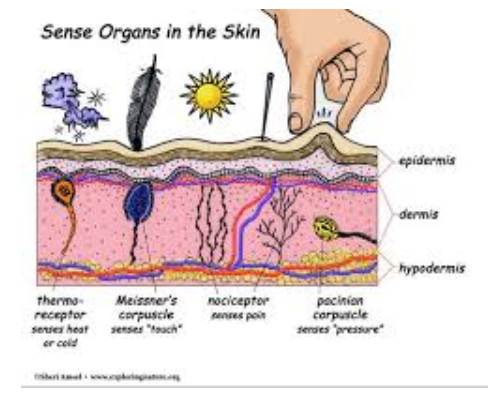This system is housed within our skin. It detects the qualities and location of sensory information. Our sense of touch, in collaboration with the proprioceptive systems, gives us a map of our bodies at all times.

This system helps with:
- Body awareness
- Identifying the quality of objects (textures, size, shape, etc.) without vision
- Detecting where you are being touched
- Recognizing danger (sharp objects, hot temperature, etc.)
- Reaction to signs of affection (hugs, gentle touch, etc.)
- Fine motor skills
- Motor planning
Some behaviors we may see due to sensory challenges within the tactile system include:
- Difficulties or discomfort with touch or tactile input (certain clothing, being hugged, etc.)
- Emotional outburst due to unwanted/unexpected touch
- Difficulty identifying where they are being touched
- Difficulty feeling temperature or pain
- Discomfort with completing activities of daily living (clipping nails, washing hair, brushing hair, etc.)
- Nervousness when standing close to others
- Extraneously touching everything and everyone
- Tendency to be messy or sensitive to being messy
A few activities that can be used to improve the tactile system:
- Massage or back rubs
- Bear hugs
- Messy Play (water, sand, water beads, shaving cream, finger painting, etc.)
- Incorporating different textured objects/fabrics in play
- Crafts with various materials
- Allowing a child to plan and execute an activity
- Play in a sensory bin
- Play Ned’s Head - https://www.amazon.com/Goliath-Neds-Head-by/dp/B084TS1D1P?th=1
- Play-doh and theraputty